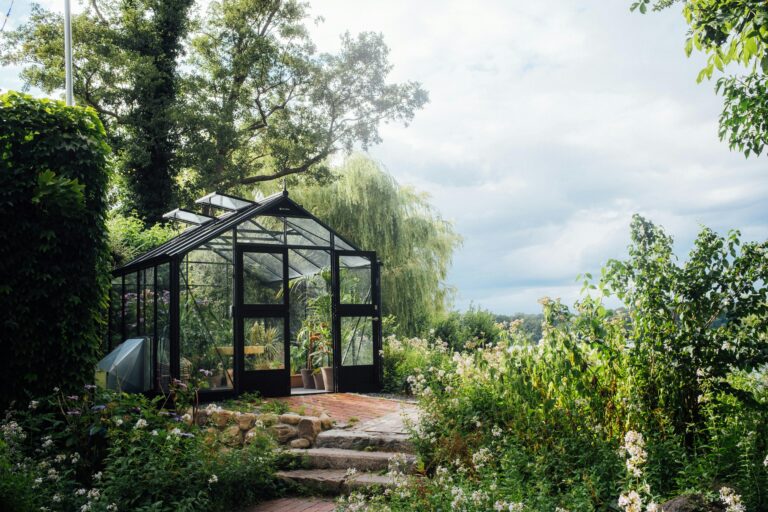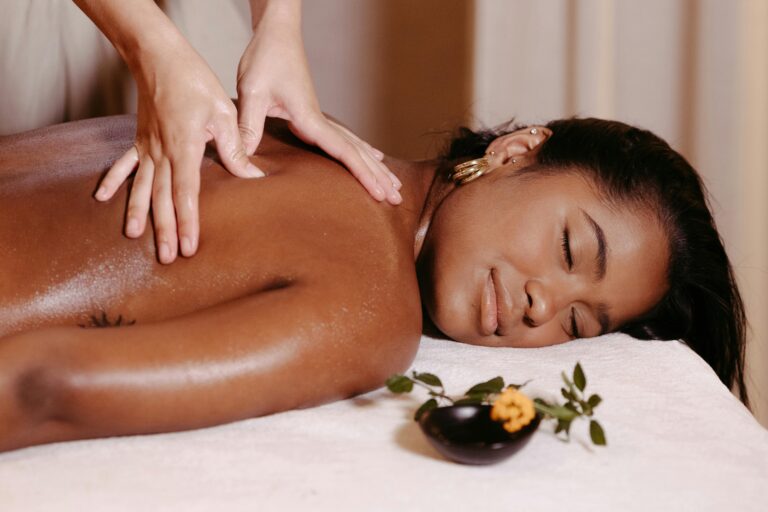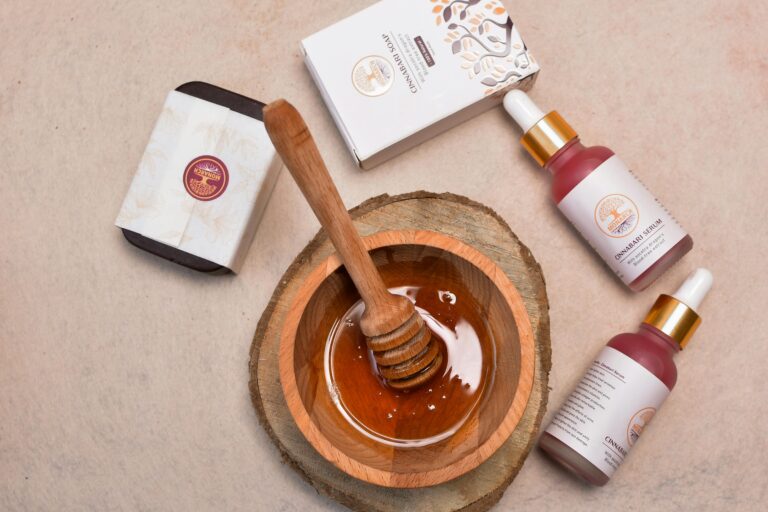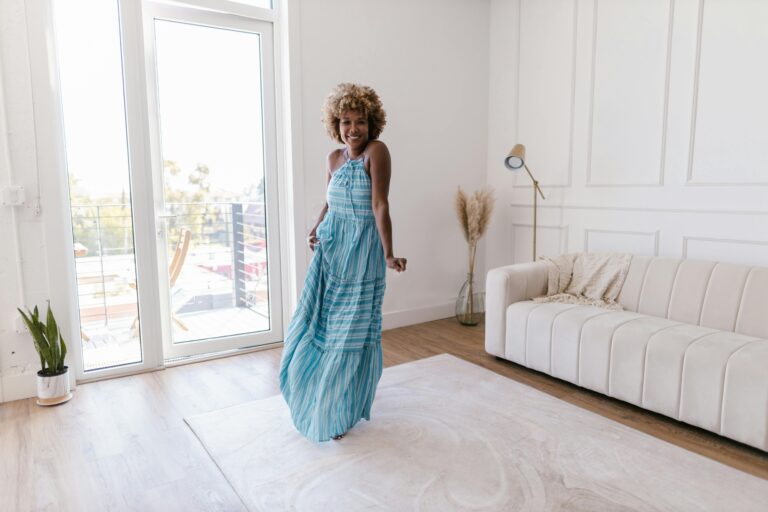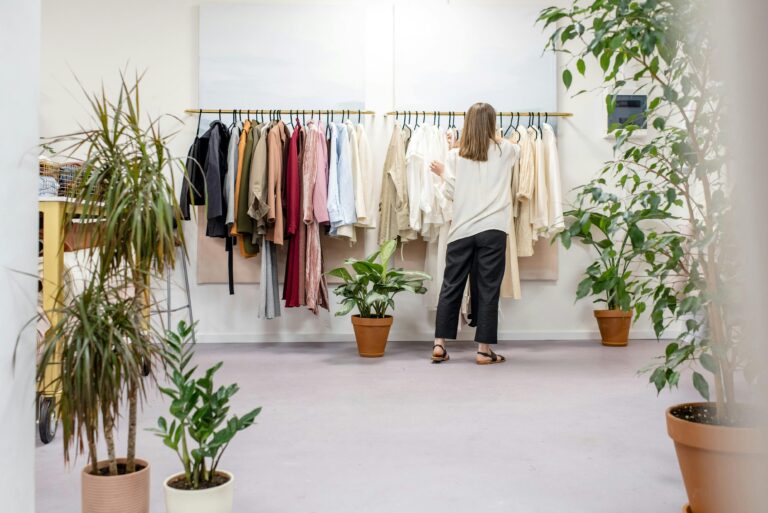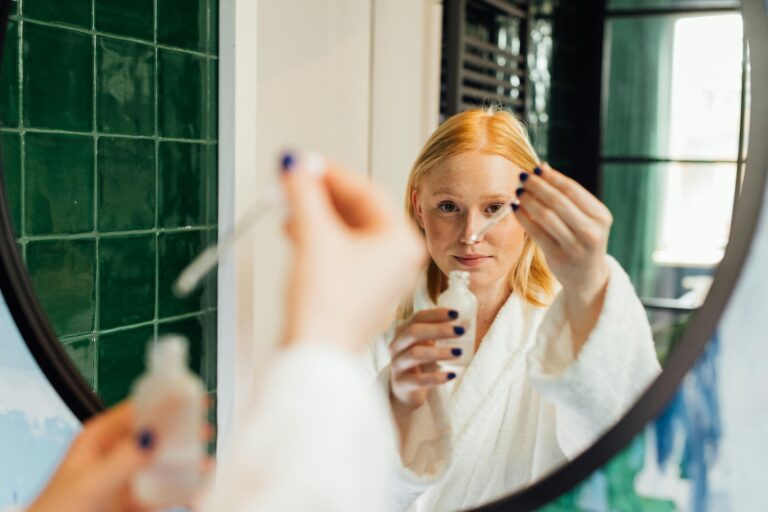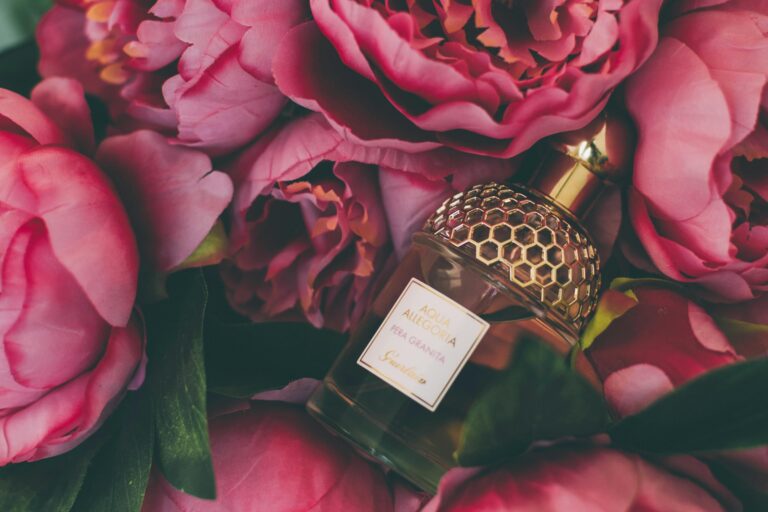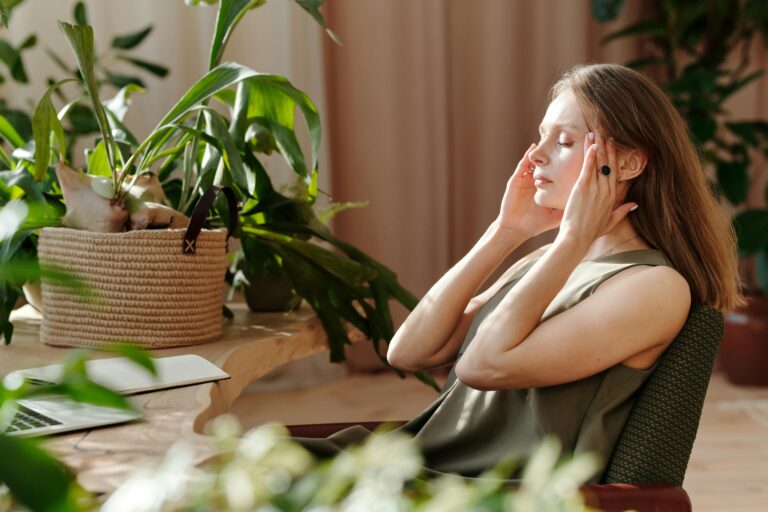21 Game-Changing Non Toxic Home Swaps For a Healthier Home
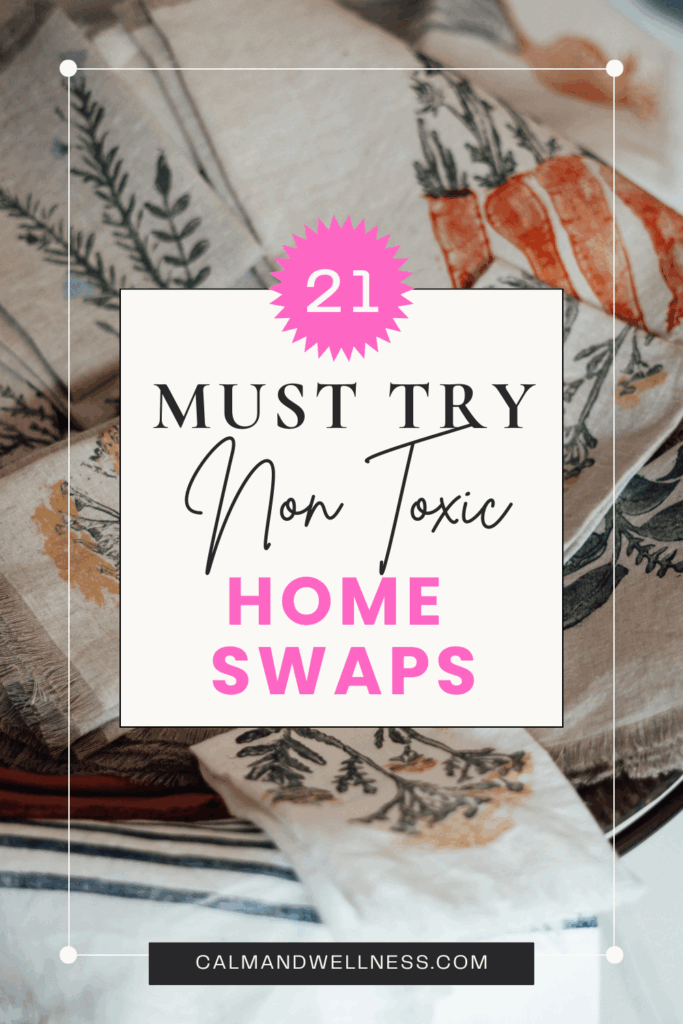
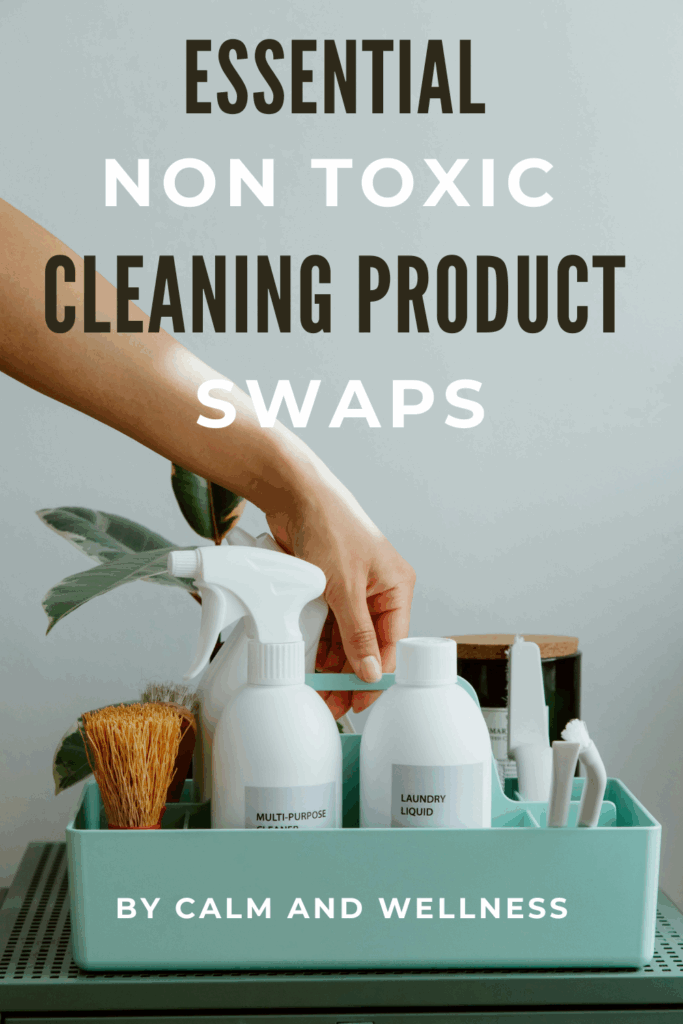
Let’s be honest: creating a non-toxic home can feel overwhelming, between complicated labels and conflicting advice, it’s hard to know where to start.
But here’s the truth: it doesn’t have to be all or nothing!
SMALL SWAPS ADD UP!
Whether you’re just beginning your “non toxic home swaps” journey or looking for new ideas, here are 21 simple and practical ideas to detox your home ….. one step at a time.
This site contains affiliate links, view the disclosure for more information.
Why Non Toxic Home Swaps Matter for Your Health
The push toward chemical-free living isn’t just a wellness trend, it’s a necessary response to A REAL PROBLEM.
Most conventional household products contain volatile organic compounds (VOCs), endocrine disruptors, and carcinogens that contribute to poor indoor air quality and serious health issues.
These toxins don’t just vanish…..they linger, accumulate, and affect everything from breathing to sleep to mood and CHILDREN, especially, are more vulnerable. Reducing exposure is not just about health; it’s a meaningful step toward creating a more sustainable lifestyle for your family—and for the planet.
GOOD NEWS: many non-toxic options last longer, work better, and can even save you money in the long run.
Essential Non Toxic Cleaning Product Swaps
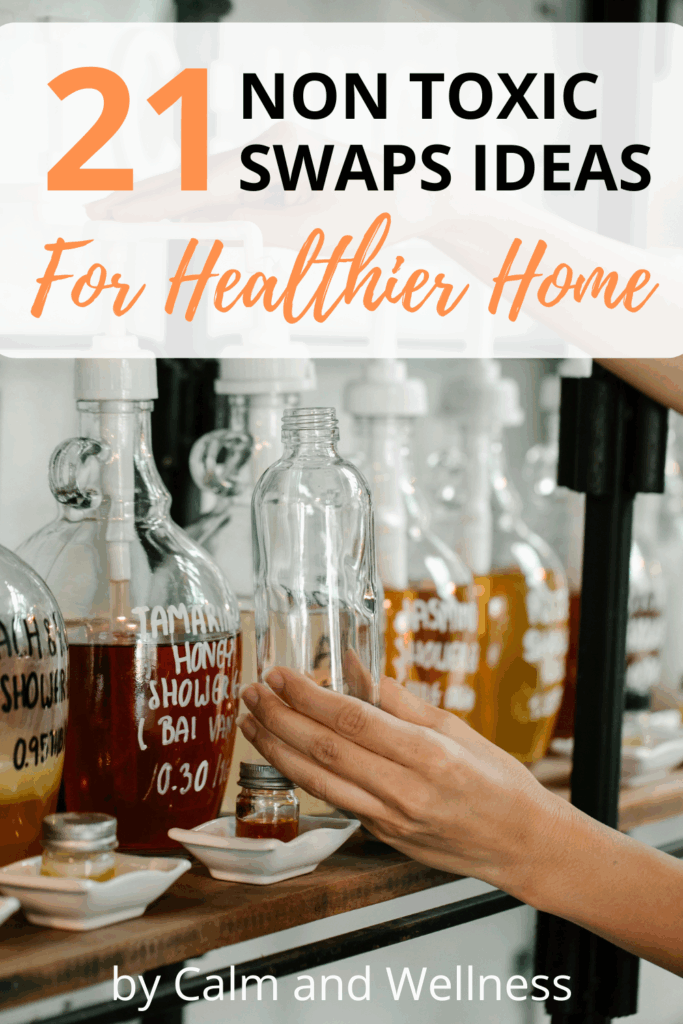
Your cleaning cabinet is probably the most toxic area of your home, but it’s also the easiest place to start your healthy home makeover.
Most commercial cleaners contain ammonia, chlorine bleach, and synthetic fragrances that create dangerous fumes and leave harmful residues on surfaces.
1. Swap Conventional Cleaners
→ Make Your Own or Buy Non-Toxic Brands
Replace harsh chemical cleaners with a simple mixture of white vinegar, water, and a few drops of essential oils.
This DIY cleaning solution cuts through grease, disinfects surfaces, and costs pennies per bottle.
Add tea tree oil for extra antimicrobial power, or lavender for a calming scent.
We also suggest trusted green brands like Attitude or Sonett.
Bathroom Cleaning Without the Burn
Ditch toxic bathroom cleaners that require ventilation and protective gear.
Instead, sprinkle baking SODA on surfaces and spray with VINEGAR for a natural fizzing action that removes soap scum and kills bacteria.
For tough stains, make a paste with baking soda and castile soap – it’s gentle on your lungs but tough on grime.
2. Streak-Free Glass Cleaning
→ Without Ammonia
Commercial glass cleaners contain ammonia and artificial dyes that can trigger respiratory issues.
Mix equal parts water and white vinegar with a squeeze of LEMON JUICE for crystal-clear windows without the chemical smell.
Use newspaper or microfiber cloths for the best streak-free results.
3. Safe Floor Care Solutions
Different flooring requires different approaches, but you can clean every surface safely.
For HARDWOOD, mix warm water with a splash of castile soap and essential oils.
TILE FLOORS respond beautifully to vinegar and water, while laminate stays spotless with just warm water and a few drops of dish soap.
4. Ditch Fragrance-Filled Laundry Detergent
→ Use Fragrance-Free or Plant-Based Options
Laundry detergent clings to your clothes and your skin, choose fragrance-free or naturally scented products without dyes or harsh chemicals
Switch to plant-based detergents or make your own with washing soda, borax, and grated castile soap. Add white vinegar to the rinse cycle as a natural fabric softener that eliminates chemical residue.
5. Rethink Shower Curtains
→ Choose PEVA Instead of PVC
PVC shower curtains can off-gas harmful VOCs, look for PEVA or cotton canvas options for a safer, stylish bathroom upgrade.
Kitchen Non Toxic Swaps for Safer Food Preparation

Your kitchen is where nourishment begins, making it crucial to eliminate toxic exposures from food preparation and storage.
The cookware and containers you use daily can either support your health or undermine it with chemical leaching.
6. Replace Non-Stick Pans →
Go for Cast Iron or Stainless Steel
Non-stick cookware releases toxic fumes when heated, especially dangerous for households with pet birds or family members with respiratory sensitivities. Invest in ceramic, stainless steel, or cast iron alternatives that improve with age and don’t release harmful chemicals into your food.
Cast iron provides natural iron supplementation and develops a naturally non-stick surface over time. Stainless steel offers durability and even heating, while ceramic cookware provides completely inert cooking surfaces that won’t react with acidic foods.
7. Swap Plastic Food Storage
→ Use Glass Containers
Plastic containers leach chemicals like BPA and phthalates into food, glass containers with airtight lids provide superior food storage without chemical migration.
For wrapping foods, BEESWAX WRAPS offer a reusable alternative to plastic wrap that keeps food fresh naturally.
8. Reconsider Tap Water
→ Add a Quality Water Filter
Tap water often contains chlorine, fluoride, heavy metals, and pharmaceutical residues that accumulate in your body over time.
A quality water filtration system removes these contaminants while preserving beneficial minerals.
Choose from countertop filters, under-sink systems, or whole-house filtration depending on your needs and budget.
9. Switch Plastic Water Bottles
→ Invest in a Glass or Stainless Steel Bottle
Staying hydrated is great …but plastic bottles? Not so much.
A reusable glass or stainless-steel bottle is better for you and the planet.
10. Choose Safer Tools in the Kitchen
→ Wood and Silicone are good
Simple swaps in your kitchen can make a big difference. Start by replacing plastic cutting boards with bamboo or solid wood.
These natural materials are durable, easy to clean, and naturally resist bacteria—no harsh chemicals needed.
Reach for wooden utensils instead of plastic, they won’t scratch your cookware, they don’t leach unwanted chemicals, and they feel just right in hand.
For heat-resistant tools like spatulas or baking accessories, food-grade silicone is a smart, non-toxic alternative. It handles high temperatures without releasing harmful fumes or breaking down like plastic can.
Bedroom and Personal Care Non Toxic Alternatives
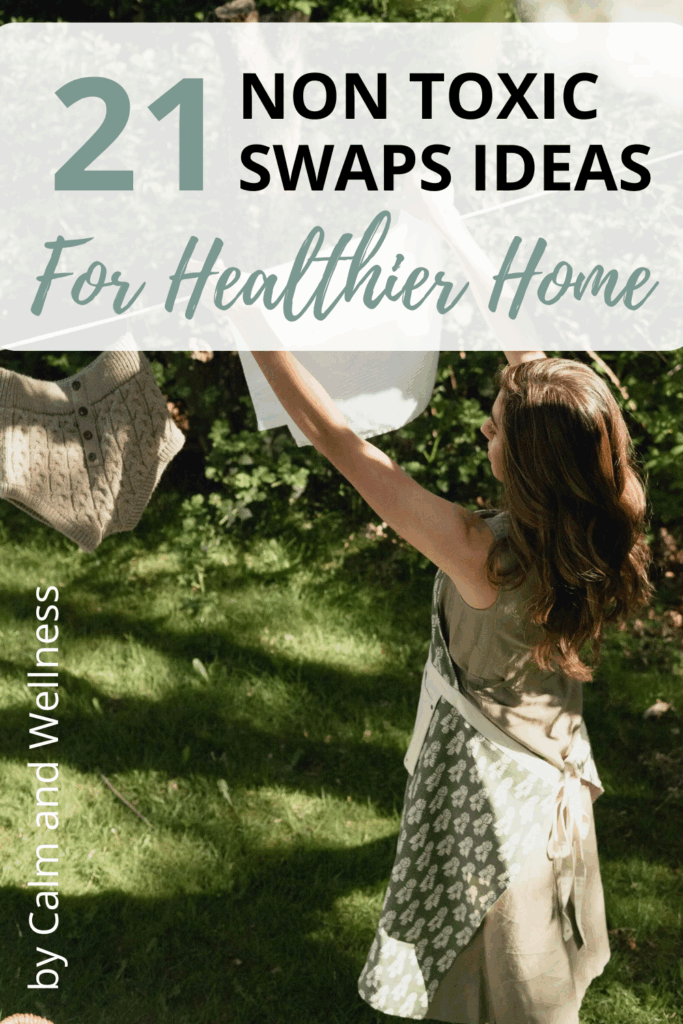
Your bedroom should be a sanctuary for restorative sleep, not a source of chemical exposure. Many conventional bedding materials and personal care products disrupt sleep quality and hormonal balance through off-gassing and skin absorption.
11. Opt for Organic When It Comes to Sleep
Most conventional mattresses are made with flame retardants, formaldehyde, and synthetic foams, materials that can off-gas harmful chemicals for years.
If you’re aiming to create a healthier sleep space, consider switching to an ORGANIC MATTRESS: natural latex, organic cotton, and wool offer the same comfort and support without the toxic load.
Yes, the upfront cost is higher, but these mattresses are built to last and often hold their shape better over time.
While you’re at it, upgrade your bedding, too. Choose sheets and duvet covers made from certified organic cotton, linen, or bamboo. These breathable fibers help regulate body temperature, wick away moisture, and get softer with every wash. Steer clear of wrinkle-resistant or “easy care” finishes—these often rely on formaldehyde-based chemicals.
12. Toss Artificial Air Purifiers
→ Bring in Plants that Clean the Air
Skip the synthetic air fresheners and chemical purifiers. Many are filled with phthalates and artificial musks that can disrupt your hormones and irritate sensitive lungs.
Instead, try diffusing a few drops of essential oil, lavender to unwind, eucalyptus to clear the air, or peppermint for a gentle pick-me-up.
Want to take it a step further?
Bring in a few air-purifying plants. Snake plants, pothos, and peace lilies quietly remove toxins from your space while adding a bit of calm green.
They’re low-maintenance, beautiful, and they work around the clock, so you can breathe a little easier.
13. Personal Care Products That Nurture
Your skin is your largest organ and it takes in more than you think: skin absorbes what you put on it so choosing clean, nurturing products matters.
Start with the basics: swap out conventional deodorants for ones made with baking soda, arrowroot, and coconut oil.
Yes….. there’s an adjustment phase (give it two weeks), but your body will find its balance.
For hair and skin, look for sulfate-free shampoos and washes that cleanse gently without stripping natural oils. The ingredient list should be short, familiar, and plant-based—because taking care of yourself shouldn’t come with a warning label.
Living Room and Common Area Healthy Swaps
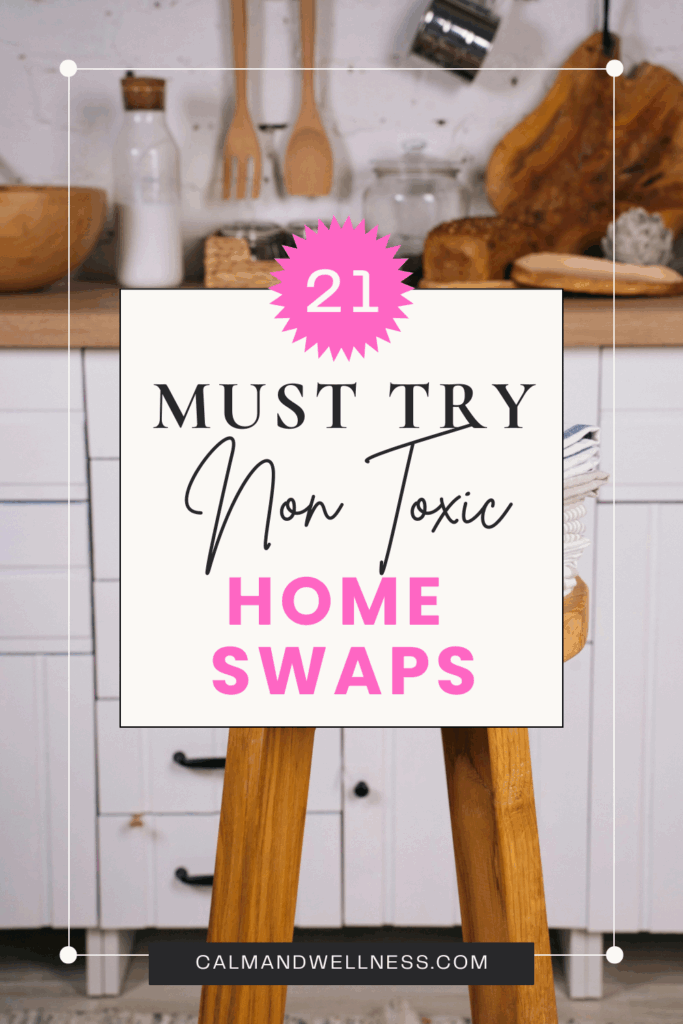
Your family spends significant time in common areas, making these spaces important for creating a healthy home environment. Furniture, flooring, and decorative elements can significantly impact indoor air quality through off-gassing and dust accumulation.
14. Replace Cheap Furniture with Strong Off-Gassing
→ Shop Secondhand or Solid Wood
Most mainstream furniture is made with particleboard, plywood, and heavy-duty adhesives all of which slowly release formaldehyde into your home. The off-gassing can last for years.
Choose solid wood whenever you can, finished with low- or zero-VOC stains.
It’s a long-term investment in both air quality and craftsmanship. Bonus points for vintage and antique finds they’ve already off-gassed and are often built to last.
For sofas and chairs, look for pieces made with natural fabrics and fillings like organic cotton, wool, or natural latex. These materials resist dust mites, skip the chemical flame retardants, and feel better all around.
New doesn’t always mean better. Opting for pre-loved or consciously made furniture is one of the simplest ways to create a home that’s healthier from the inside out.
15. Floors That Don’t Hold Toxins
Wall-to-wall carpet may feel cozy, but it’s a magnet for dust, allergens, and off-gassed chemicals. It also needs heavy-duty cleaners to stay looking fresh.
Hardwood, tile, or natural stone give you a smooth, easy-to-clean surface that doesn’t trap pollutants. Add softness with area rugs made from wool, jute, or organic cotton natural fibers that breathe better and wear beautifully.
16. Paint That Doesn’t Pollute
Freshly painted walls shouldn’t come with a headache. Conventional paints release VOCs long after they dry, affecting air quality for months
Low-VOC and zero-VOC paints deliver the same rich color without the chemical cloud. Some natural formulas even outperform traditional brands and they come without the harsh smell.
17. Trade Scented Candles
→ Choose Beeswax or Coconut Wax
Paraffin candles release toxic compounds including benzene and toluene when burned. Soy candles, beeswax candles, and coconut wax alternatives burn cleaner and longer while providing the same ambiance. Choose candles scented with essential oils rather than synthetic fragrances for truly natural aromatherapy.
Conventional candles often contain paraffin and synthetic scents. Opt for non-toxic options made with beeswax or coconut wax and essential oils for a cozy vibe…without the fumes.
18. Natural Pest Control Methods
Chemical pesticides pose serious health risks, especially for children and pets. Essential oil sprays using peppermint, tea tree, or neem oil repel insects naturally. Diatomaceous earth provides safe ant and crawling insect control, while sticky traps catch flying pests without toxic baits.
Budget-Friendly DIY Non Toxic Solutions
Creating a chemical-free lifestyle doesn’t require expensive specialty products.
Many effective natural cleaning solutions and personal care items can be made with simple ingredients from your kitchen pantry.
With white vinegar, baking soda, castile soap, lemon juice, and essential oils, you can create every cleaning product your home needs.
These ingredients cost less than $20 and PROVIDE MONTHS OF CLEANING SOLUTIONS that outperform their toxic counterparts.
19. Essential Oil Starter Kit Strategy
Begin with versatile oils like lavender (calming, antimicrobial), tea tree (antifungal, antibacterial), lemon (uplifting, degreasing), and peppermint (energizing, pest-repelling). These four oils handle most household needs from cleaning to aromatherapy.
Create an all-purpose spray with equal parts water and vinegar plus 10 drops of your favorite essential oil. Mix baking soda with a small amount of castile soap for scrubbing paste. Combine lemon juice with salt for natural bleaching and stain removal.
20. Kitchen-to-Bathroom Beauty
COCONUT oil works as makeup remover, moisturizer, and hair mask.
APPLE CIDER vinegar clarifies hair and balances skin pH.
HONEY provides antimicrobial face masks,
OATMEAL gently exfoliates sensitive skin.
These multipurpose ingredients save money while delivering superior results.
21. Ditch Synthetic Air Fresheners
→ Try Essential Oils or Simmer Pots
Simmer cinnamon sticks, orange peels, and cloves on the stove for natural home fragrance. Baking soda mixed with essential oils creates carpet deodorizers. White vinegar in small bowls absorbs odors rather than masking them with synthetic fragrances.
Most air fresheners are loaded with synthetic fragrances that can mess with your hormones and trigger headaches. Try a diffuser with pure essential oils or make a simmer pot with citrus, herbs, and spices instead.
Shopping Guide: Where to Find Non Toxic Home Products
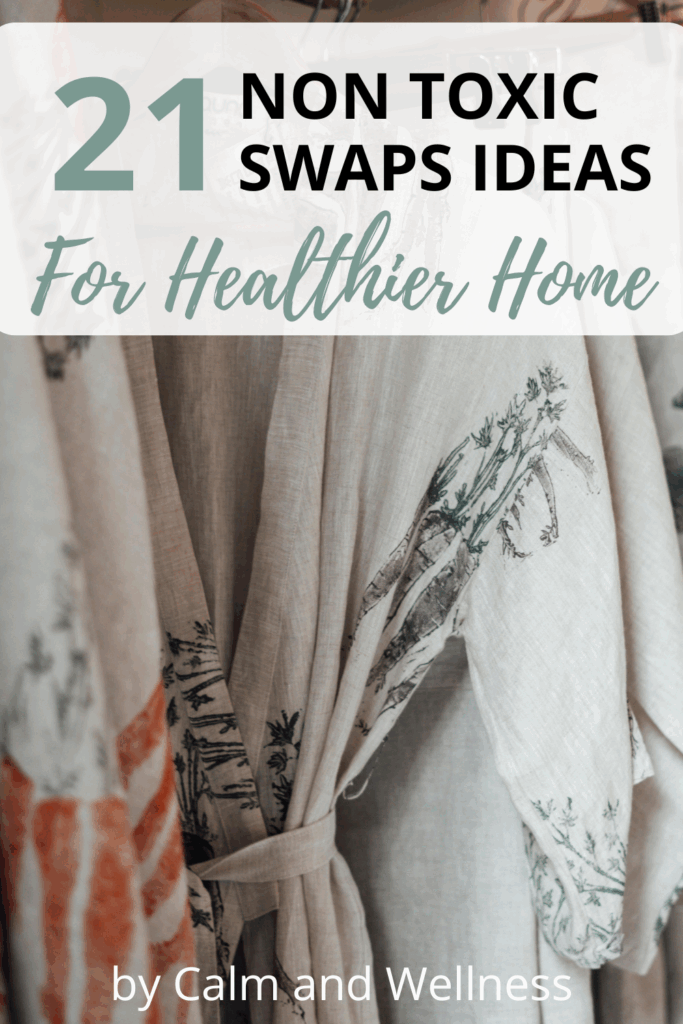
Navigating the world of natural home products can feel overwhelming, but knowing where to shop and what to look for simplifies the process significantly.
Online Retailers for Eco-Friendly Home Goods
Looking to shop from home?
Thrive Market, Vitacost, and iHerb make it easy to stock up on nontoxic essentials—often at lower prices than in-store. Think clean ingredients, bulk options, and subscribe-and-save perks.
For convenience, Amazon’s “Made Safe” and “EWG Verified” filters can help you cut through the clutter. And if you’re into sustainability and transparency, Grove Collaborative curates products that are both clean and kind to the planet.
Certification Programs That Matter
Look for products certified by Environmental Working Group (EWG Verified), GREENGUARD Gold, Made Safe, or USDA Organic. These third-party certifications ensure products meet strict safety standards rather than relying on marketing claims.
Cradle to Cradle Certified products meet comprehensive environmental and health criteria throughout their lifecycle. Forest Stewardship Council (FSC) certification ensures wood and paper products come from responsibly managed forests.
Local Resources for Natural Living
Skip the big-box overwhelm. Health food stores, co-ops, and natural markets often stock small-batch brands you won’t find elsewhere.
Their staff? Usually incredibly helpful—and happy to guide you toward safer picks that match your needs.
And don’t overlook your farmers market. Beyond produce, you’ll find makers offering handmade soaps, nontoxic cleaners, even organic linens. Shopping local keeps your home clean and your footprint low.
Supporting local producers often provides higher quality products at competitive prices while reducing packaging and transportation impacts.
Apps and Research Tools
The EWG Healthy Living app lets you scan product barcodes for instant safety ratings and ingredient analysis.
Think Dirty app provides similar functionality with user-friendly toxicity scores.
HowGood app focuses on environmental and social impact ratings for conscious purchasing decisions.
Greenwashing Recognition
Terms like “natural,” “eco-friendly,” and “non-toxic” sound good…. but they’re NOT REGULATED. Anyone can use them !
Instead of relying on the front of the label, flip it over.
Scan the ingredients. Real natural products usually list things you recognize: plants, oils, minerals. Not a long list of chemicals you can’t pronounce.
Keep it simple…. if you wouldn’t cook with it or put it on your skin, maybe it doesn’t belong in your home.
The Fragrance-Free Misconception
Just because a product says “fragrance-free” doesn’t mean it’s toxin-free.
Many still contain preservatives, sulfates, or masking agents that can trigger sensitivities—especially for those with allergies or skin issues.
Look for truly unscented options or products scented only with essential oils. They’re gentler, safer, and often come with added wellness benefits. Lavender to relax, eucalyptus to clear the air, peppermint to wake you up.
Because clean shouldn’t come with hidden chemicals.
DIY Safety Considerations
Never mix different cleaning products, even natural ones, without researching compatibility. Vinegar and castile soap create a curdled, ineffective mixture. Vinegar and hydrogen peroxide form peracetic acid, which can be harmful in enclosed spaces.
Store homemade products in labeled containers away from children and pets. Most DIY solutions have shorter shelf lives than commercial products, so make smaller batches and replace regularly. Essential oils can be potent, so always dilute properly and research safety for pregnant women, children, and pets.
Creating Your Healthy Home Action Plan
You don’t need to transform your entire home overnight! It’s more helpful (and far less overwhelming) to see this journey as part of a broader shift toward building a more eco-friendly home.
Don’t empty your entire cleaning cabinet and personal care collection in one day. This approach creates unnecessary expense and often leads to buyer’s remorse when you can’t find products that work as expected.
Instead, replace items as they run out, starting with the most frequently used products.
Focus on one room or product category at a time.
Master natural cleaning solutions before tackling personal care swaps, this gradual approach allows you to learn what works for your household while spreading costs over several months.
Begin with the products you use most frequently or in the areas where your family spends the most time.
Kitchen and bathroom swaps often provide the biggest impact because these rooms involve direct contact with skin and food preparation surfaces.
The cumulative effect of these changes creates a home that supports wellness rather than undermining it.
The goal isn’t perfection….it’s progress.
The content on Calm & Wellness is for informational purposes only and is not intended as medical advice, diagnosis, or treatment, always consult with a qualified healthcare professional
RELATED POSTS

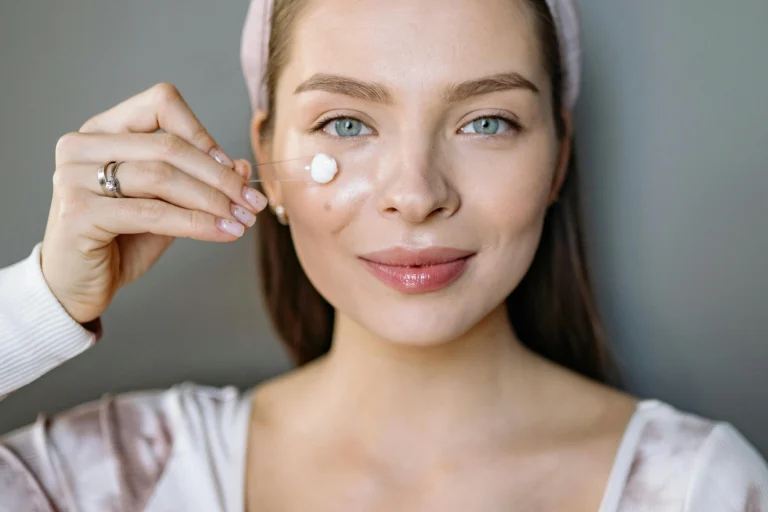


19 Natural Ingredients for Hair Care That Actually Work (And Why You’ll Never Go Back)
Okay, real talk. If you’ve ever stared at the back of a shampoo bottle and felt like you needed a chemistry degree to understand it… you’re not alone. Between the sulfates, parabens, and mystery “fragrance”…
